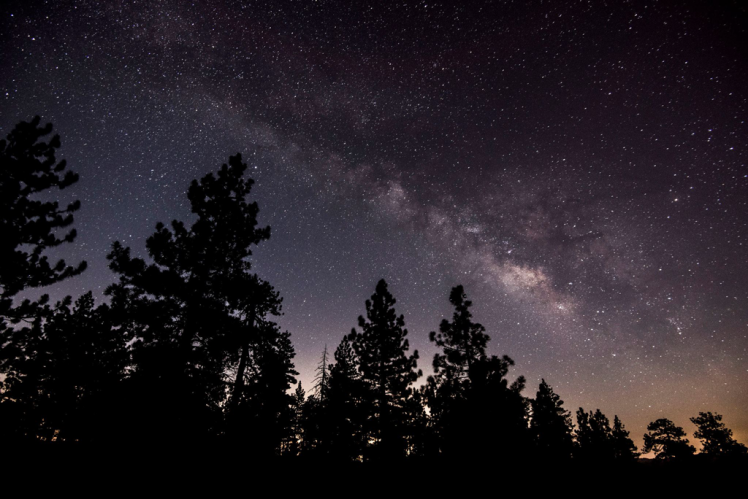For all the knowledge we have in this proud century, we have become out of touch with reality. We sit in air-conditioned rooms in 40 degree heat, sleep through thunderstorms, and let people study the world for us instead of examining it ourselves. theories get built on assumptions, upon even older assumptions, and the whole thing departs into a world totally disconnected from reality.
After all, How could mortal men ever hope to match the infinite majesty of the sky?

Before you go any further, I have to warn you I’m going to challenge some deep-seated ideas. If you are not ready for that, then I would suggest you not read any further. You have been warned.
So, How many of us have taken the time to look with our own eyes at the night sky? Rekindle that sense of blind wonder and come sit with me for a bit. It’ll be fun! Leave behind Galaxies, black holes, comets, nebula, and come on a journey with me.
Do you remember science class, and sitting down and learning that stars were big burning balls of gas millions upon millions of miles away? I know I do. But is it true? It’s not like we’ve ever gone and visited any of them. But as an impressionable teenager, I just believed every word I was told. Even if at the back of my mind something twitched in response. “That seems kinda weird. How can they know that?” But it was only a pinprick of doubt.
A figure brought up rather often is Galileo Galilei. The popular telling of the story goes something like this:
Everyone believed the earth was the center of the universe, along with the church at the time. And Their Word Was Law. Nobody would dare challenge them. After all, Do you know what happened to those people? They Burned. Now, Galileo didn’t get burned at the stake. He didn’t even challenge them directly. He merely implied heliocentrism in something he wrote. But it did get him charged with heresy and locked up for the rest of his days. Or so the story goes. History is a very, very fragile thing. If you want a better explanation, Look no further than this link.
He wasn’t the first to come up with the theory of heliocentrism, either (that was copernicus). But, as the link in question mentions, He hadn’t proven anything! if anything, he was the one working on faith rather than reason. His quarrel was with the scientists of the day, not the church. Who don’t seem as unreasonably dogmatic as they have been described in popular culture. The link in question seems to think that stellar aberration and stellar paradox prove the theory correct. Honestly, I have no idea. I get the impression it boils down to the fact that stars change their positions in the sky therefore the earth is moving. But the older models had the stars shifting instead of the earth, so I’m confused.
It’s true that the Pletomatic system was flawed, and the copernican system matched reality more closely, But so does the Tychonic system!

Why do I bring this up? Well, I’m discussing cosmology at it’s most fundamental levels. And this particular point is important, because we believe space is so incomprehensibly vast that it requires scientific notation to even write the distances down properly!

Many of our ideas about space were shaped by these discussions, such as the vast distances between stars. Do keep in mind that judging distance in a telescope is practically impossible- In order to determine the size of something at a distance you need an object at a similar distance for comparison. Otherwise size and distance cannot be discerned from one another.
We can caculate relative distance by observing redshift and blueshift, but without a point of reference you cannot make objective values on the distance, speed, or size of the objects in question! For all we know, those “superclusters” could be tiny and only a few thousand kilometers away! And that facinates me to no end.
So, I was going to get to stars. And here we are. See if what I’m thinking is correc, then the ‘big bang’ ceases to make sense on a number of levels. The theory for the formation of stars is like this:

Long ago there were big clouds of space dust, and over the eons they drew themselves together and started doing things when they reached critical mass? okay, I’ll admit it, it sounds really lazy as a theory.
Stars supposedly are fusion reactors, forming hydrogen at first, then helium, iron, and other heavier elements are made in this great crucible. I must admit, it sound intruging.
But how on earth do we know any of that? Ah, see that’s just it! We Don’t! None of that is based on a scrap of evidence. What made people think if was a fusion reactor? Why is gravity a theory so ingrained in people that they can’t see past it? Or the theoretical speed limit of light and chaos theory. We’ve bought into the science of Einstein and Issac newton and forgotten those of the likes of nikola Tesla and James Maxwell.
I make mention of this because of an alternate way of looking at things: The Electric Universe.
Instead of fusion, stars are just electromagnetic in nature. Just like a light bulb, I suppose? after all, science is about finding the truth.
Instead of clinging to outdated theories, maybe it’s time to take another look? We don’t understand the world we live in just yet. . And the next time you are out at night, you can look up at the sky in wonder instead of boredom.

Another enthralling Post. There was an article written many years ago that said gravity was far too weak a force to explain the workings of the Solar System, and which favoured an explanation based in electric fields.
LikeLiked by 1 person